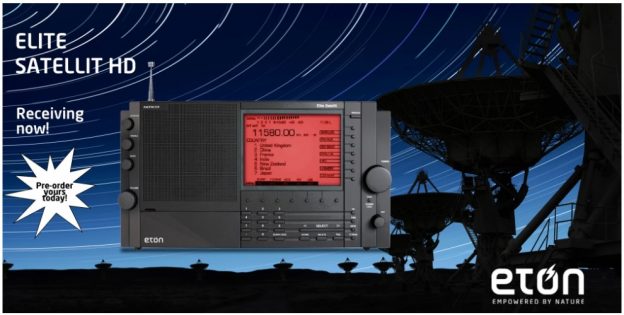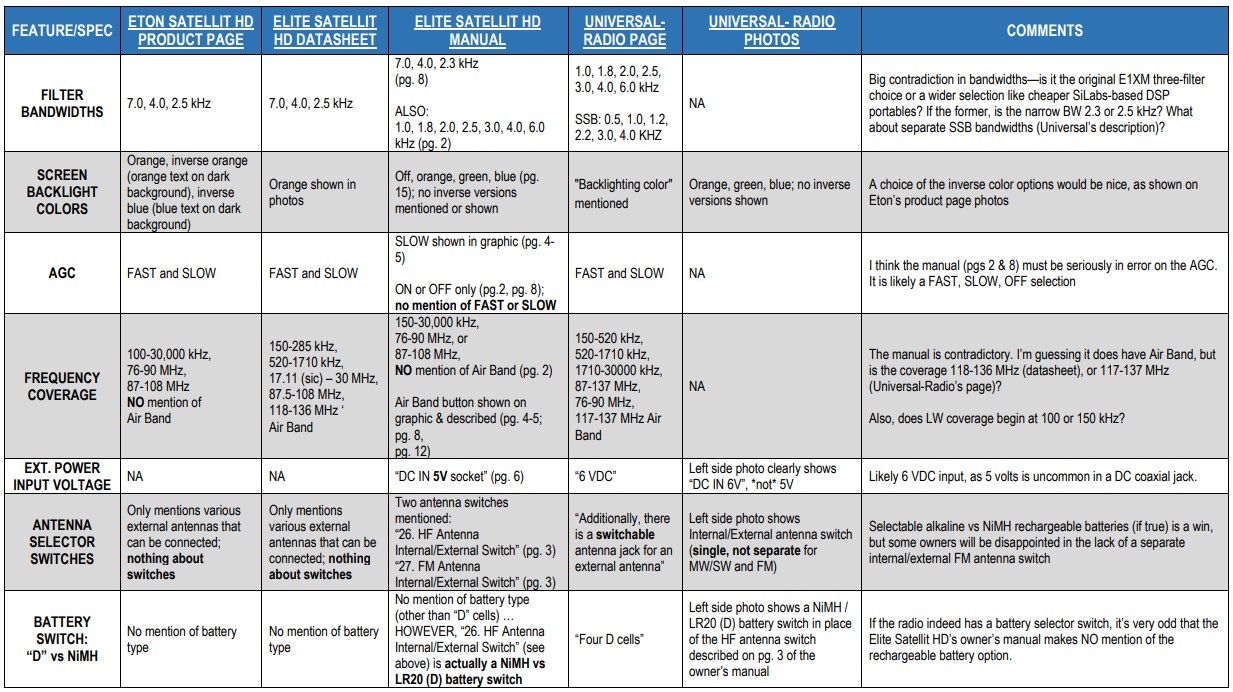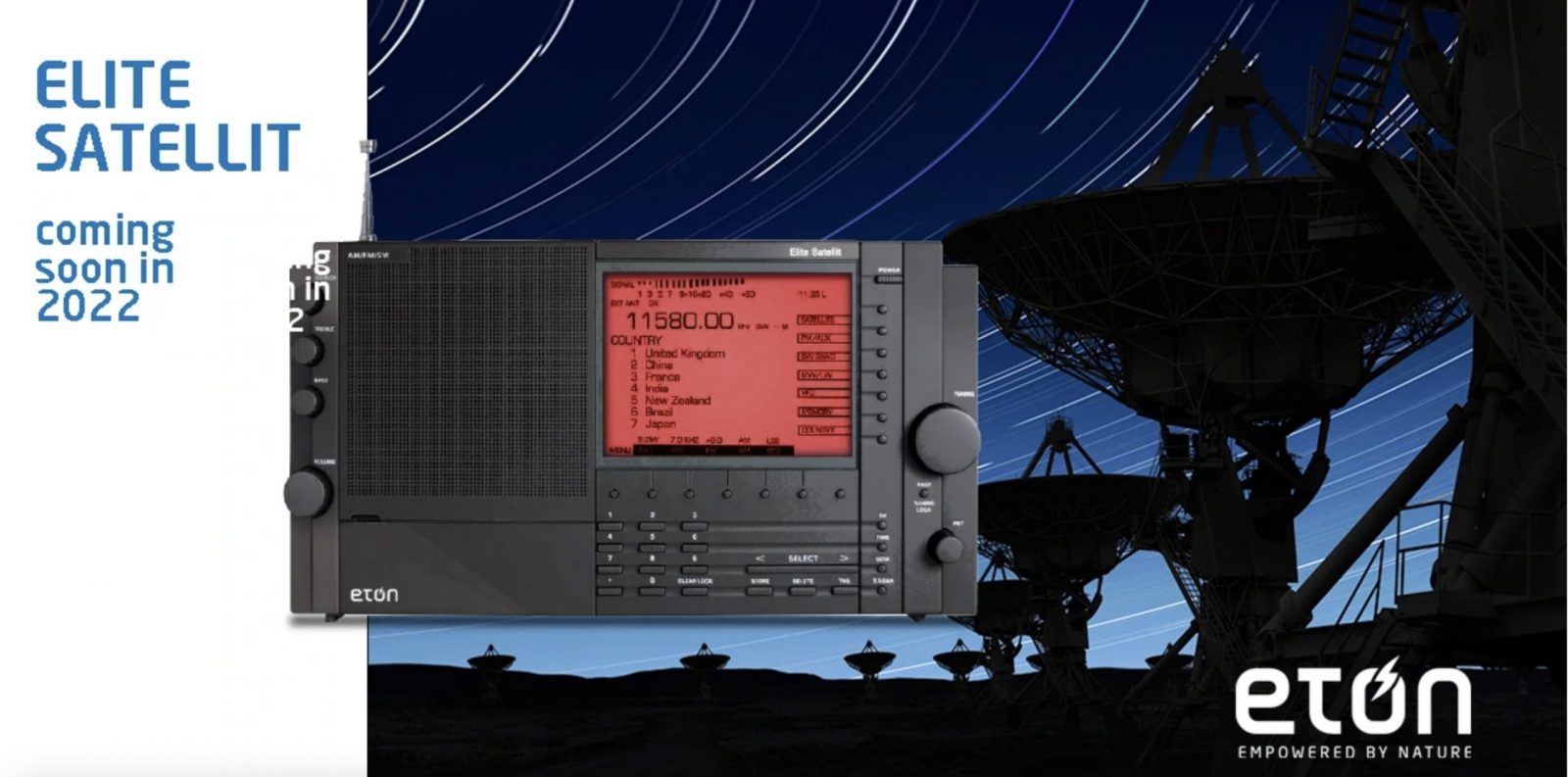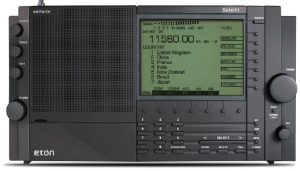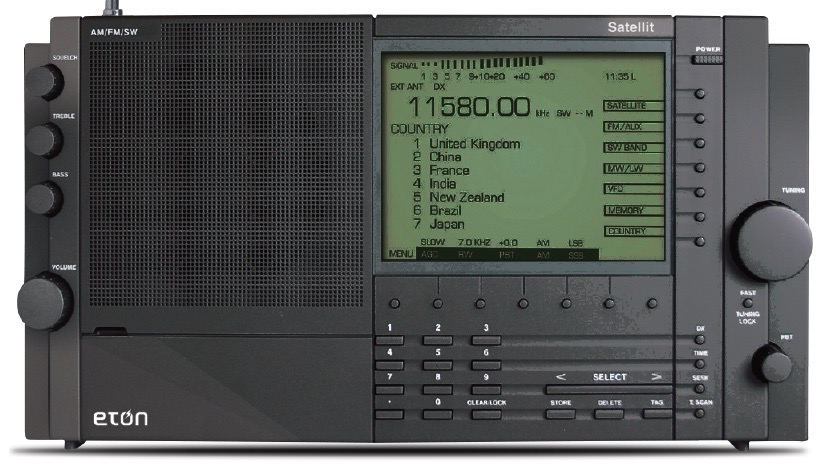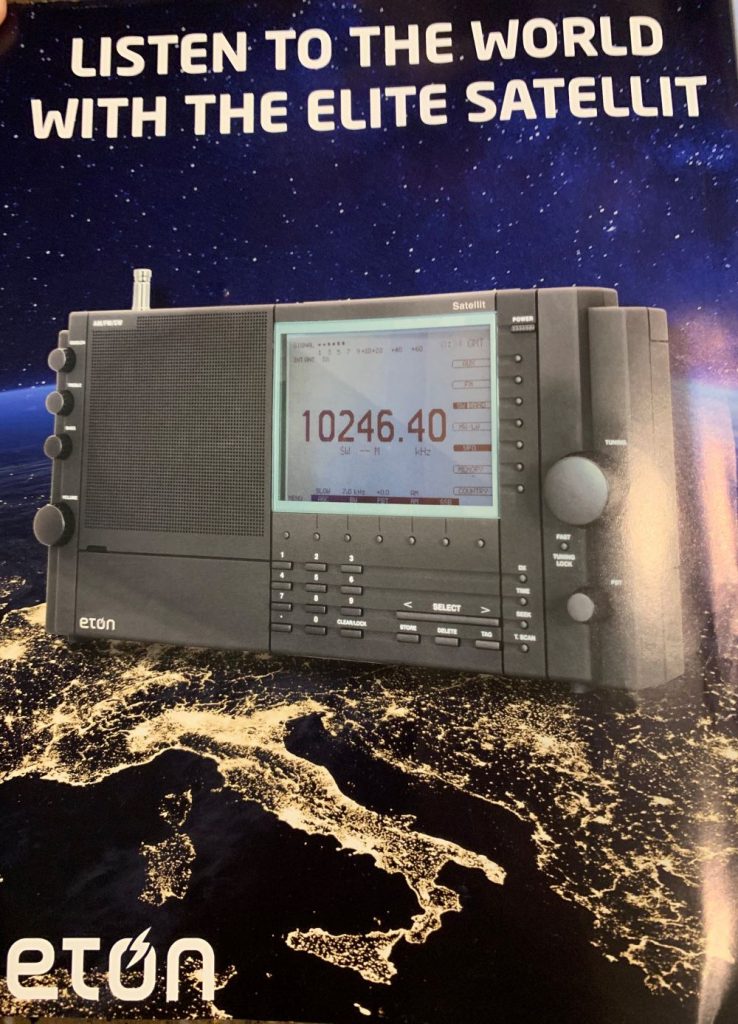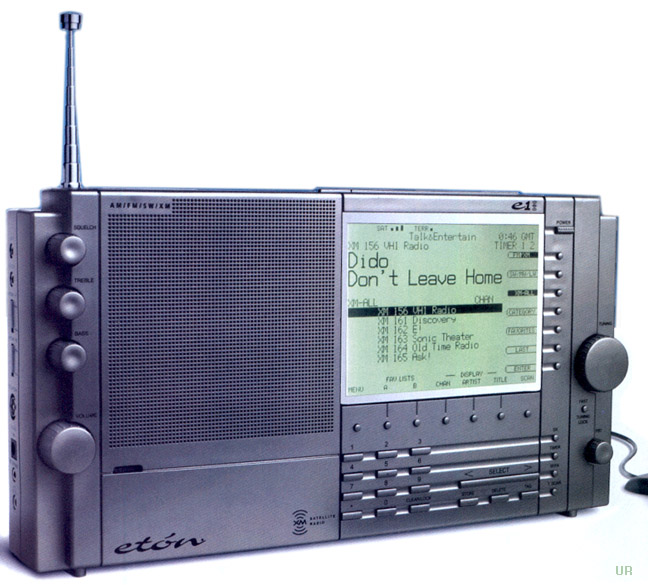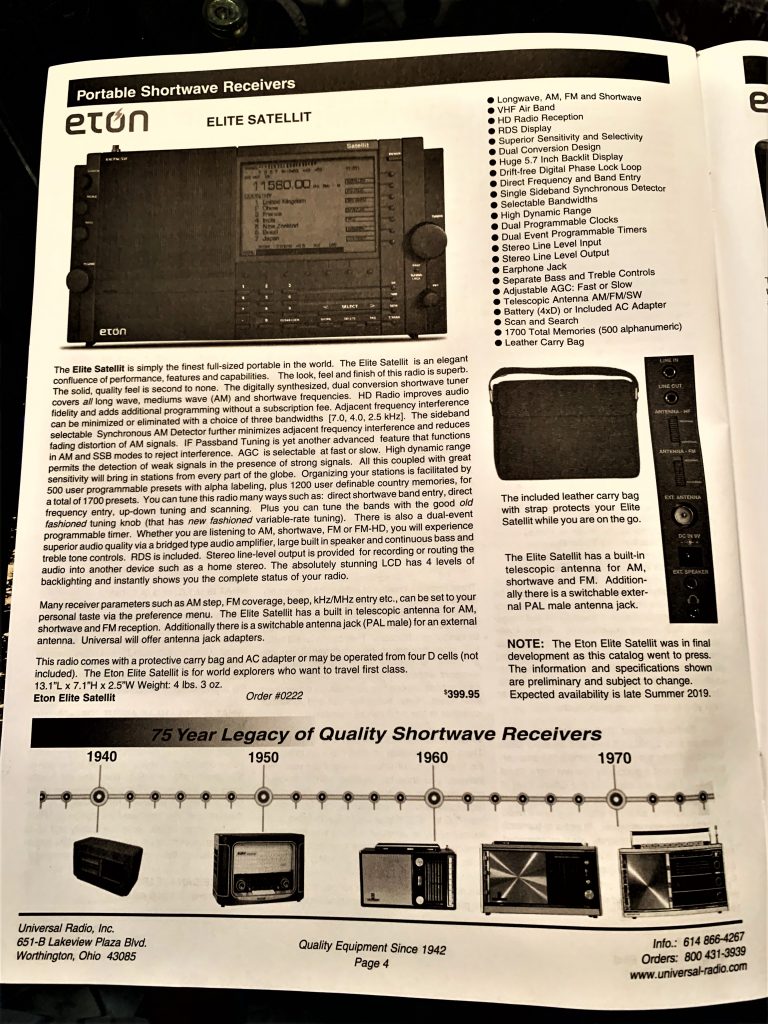by Guy Atkins
As reported yesterday by Dave Zantow N9EWO and in the SWLing Post, the Eton Elite Satellit HD receiver has left the vaporware zone and arrived in production. Universal-Radio started taking orders on June 28th.
Any new receiver is cause for celebration, but the closer I inspect the available manuals and marketing materials, well, the more questions I have!

I’m sorry Mr. Eton, but it appears your marketing materials are very confused. I’ll need to send you to a proofreading specialist.
I began comparing Eton’s product page for the new receiver, with their own datasheet and owner’s manual… as well as Universal-Radio’s catalog page and photos. The deeper I dug, the less certain I was of the feature set and specifications of this “revival” version of the Eton E1/E1XM receiver.
How best to describe what I was finding? I decided to create a table showing the inconsistencies between the sources / materials.
You can download a PDF version of the above chart here: ELITE SATELLIT HD CHART
Note that the PDF contains links in the header to the sources of information on Eton’s web site and Universal-Radio’s catalog page.
I’m sure there are more mysteries and puzzlers lurking within the documents and pages referenced above. The biggest question of all, in my opinion, is the circuitry itself. Is the receiver a superheterodyne design as in the original E1/E1XM (with three discrete ceramic I.F. bandwidth filters), or is it a DSP circuit, a la SiLabs-based portable radios with additional (but poorly performing) bandwidths?
I personally hope Eton’s new flagship includes filters that are a copy of those in the original E1/E1XM. They have better shape factors and ultimate rejection prowess than the filters in DSP portable radios on the market today. Coupled with selectable synch-AM and Passband Tuning, they are a powerful combination for fighting interference in a portable receiver.
What do you think about all the conflicts as described in the above table? Perhaps it’s just a jumble of preliminary prototype specs and final features. I hope Eton will take steps soon to bring clarity and consistency to their materials. Also, as Eton’s leading–or only–USA dealer, Universal’s web page should match too.
Please leave your comments below!
Guy Atkins is a Sr. Graphic Designer for T-Mobile and lives near Seattle, Washington. He’s a regular contributor to the SWLing Post.

